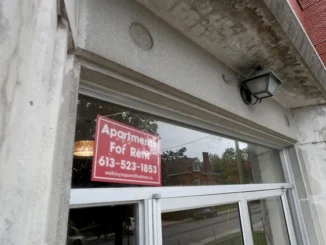
U.S. home prices continued to climb in March as a persistent shortage of homes for sale helped to buoy the housing market, according to the Intercontinental Exchange (ICE) Home Price Index.
And while prospective homebuyers cope with the challenges of rising housing unaffordability, existing homeowners are reaping the benefits of historically strong price gains. Nationwide equity on mortgaged homes soared to a record $16.9 trillion in the first quarter of 2024, with $11 trillion available for leverage while maintaining a 20% equity cushion — also an all-time high.
The ICE index showed that home prices increased by a seasonally adjusted 0.42% month over month in March, marking the third consecutive month of above-average price gains, although this was a slight pullback from February’s 0.58% increase. On an annual basis, home price growth eased slightly in March to 5.6%, below the upwardly revised gain of 6% in February.
“The recent trend of rising interest rates has dampened homebuyer demand and allowed the inventory of homes for sale to improve,” Andy Walden, ICE’s vice president of enterprise research strategy, said in a statement.
“We’re still very much in a hole from an inventory perspective, but that deficit has fallen from 50% a year ago to 38% in March. Today, with 3.3 months of supply, inventory is still historically low and indicative of a seller’s market. This is helping to keep home price growth resilient even though demand is down. In fact, despite some minor slowing, March marked the third consecutive month of stronger than average growth.”
About 48 million U.S. homeowners with mortgages have tappable equity. And the average amount of tappable equity per borrower increased to $206,000 in March, up from $185,000 at the same time last year.
Two-thirds of all tappable equity is held by homeowners with credit scores of 760 or higher, while two-thirds is held by homeowners with first-lien mortgage rates below 4%, and 84% is held by those with rates lower than 5%.
Five West Coast metros — Los Angeles, San Francisco, San Jose, San Diego and Seattle — account for nearly one-quarter of total tappable equity, according to ICE. Mortgage holders in these West Coast metros hold a cumulative $2.7 trillion in tappable equity, but they also tend to have first-lien interest rates well below the national average due to more frequent refinance activity across high-balance loans.
New York City and Washington, D.C., meanwhile, account for another $1.1 trillion in tappable equity. For these borrowers, second-lien home equity products remain a particularly attractive option for tapping into significant amounts of housing wealth without sacrificing a historically low rate on their existing mortgage.
In April, the Federal Housing Finance Agency (FHFA) announced a new product proposal for government-sponsored enterprise (GSE) Freddie Mac that would allow the agency to purchase certain single-family, closed-end second mortgages. This would offer borrowers an alternative way to access their home equity without surrendering a first mortgage with a more favorable interest rate than is currently available.



